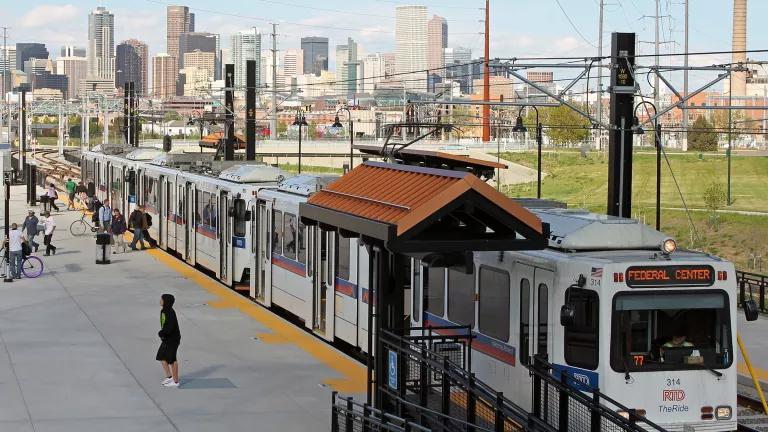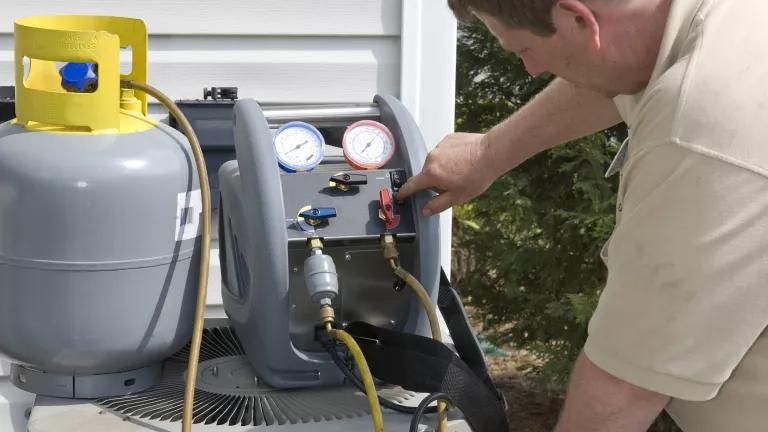Seattle Orders Building Standard and Walk Zone for Climate
Speaking from Glasgow at the international COP-26 climate meeting, Mayor Jenny Durkan announced an executive order to cut Seattle’s greenhouse gas emissions from the city’s two largest sources: transportation and buildings.

In some good news on climate action, Mayor Jenny Durkan announced an exciting executive order to cut Seattle’s greenhouse gas emissions from the city’s two largest sources: transportation and buildings. Mayor Durkan's announcement came from Glasgow on the first day of the international COP-26 climate meeting.
Transportation is the source of almost two-thirds (over 60 percent) of Seattle’s climate emissions. Buildings account for another third. Buildings are also the city's fastest-growing source of emissions as more go up, and heating and cooling needs increase with more extreme weather.
Setting a new (building performance) standard
In a decisive step to cut emissions, Mayor Durkan calls on city staff to start a community outreach process with the goal of passing a “building performance standard” for large buildings (20,000 square feet and up) in 2022.
Together with the city’s required “building tune-ups” and Washington State standards, this could cut emissions from this sector by a projected 27 percent. Once the standard is actually passed, Seattle would join four other U.S. cities in employing this powerful tool to slash emissions, including most recently Boston.
A building performance standard is a requirement that building owners meet long-term and interim targets for reduced energy use and reduced or phased-out fossil fuel use. Setting future targets both gives building owners certainty and allows them flexibility to meet the targets in different ways; the interim targets ratchet down to get there.
Building performance standards can be created to meet multiple goals:
- Climate: Requiring greater energy efficiency, and reducing or eliminating fossil fuels such as the “natural” gas used for heating, cooling, and water heating, so that electricity can be used from cleaner sources. The upshot is that less energy is used in buildings, and what’s used is cleaner.
- Health: Improving indoor air quality for better health and reduced risk of childhood asthma; this is especially important in communities bearing greater health burdens, such as lower-income and Black and Indigenous residents, and other people of color.
- High-quality jobs: Retrofitting buildings to improve their efficiency and reduce their pollution; this takes work, and those jobs are local. Policies can help ensure that more of these jobs pay well and that training and access are improved, especially to support people historically shut out of these jobs, particularly people of color and women.
- Housing affordability: The mayor’s executive order also directs the City to provide options to lower up-front and operating costs for affordable housing; for city-owned and other affordable housing, greater energy efficiency should help reduce costs over time for residents.
- Equity: Increasing equity by improving health and access to jobs and affordable homes, as above. Rather than further burdening underserved communities, protecting tenants and provide funding for owners who need help to upgrade their buildings.
Community stakeholders should be able to help shape these goals and outcomes through a thoughtful and inclusive process.
The Mayor’s executive order also calls for an end to fossil fuel use in City-owned buildings by 2035.
Creating an “urban pedestrian zone” -- or zero-emission area
On transportation, the Mayor’s executive order calls for expanding Seattle’s Stay Healthy Streets--its Covid-launched largely-car-free streets program--to establish its first “urban pedestrian zone.” Potential sites should be identified in 2021, with implementation in summer 2022.
The “urban pedestrian zone” is also called a zero-emission area in the order, and that’s an exciting step. Not only should it make walking safer, depending on how it is implemented, it should also help residents breathe much easier. Cities in the U.S. are just starting to turn to this concept, which London and other European cities have pioneered.
Zero-emission areas can be implemented in different ways, and as with building performance standards, can be set up to meet different goals--often to cut emissions and improve air quality, as well as supporting more mobility options, such as safe walking and biking and high-quality public transit. They can support equity by shifting the transportation system to make wealthier solo drivers pay a price that reflects their choices’ true cost, and making clean, affordable, reliable, transportation options safe and easily accessible for residents of underserved communities.
Noteworthy examples of these zones include:
- London’s “Ultra Low Emission Zone,” which charges drivers of polluting vehicles; last week, the city dramatically expanded this zone--which, created in 2019, had already cut nitrogen dioxide pollution by 44 percent within its boundaries--to cover one-quarter of the city and 3.8 million people.
- Amsterdam’s five existing zones; by 2030 the goal is to make the entire city a zero-emission area.
- Barcelona’s low-emission zone was introduced in January 2020; the city will tighten restrictions on polluting vehicles until they are phased out. The city’s car-free “superblocks,” which a new report finds have cut local air pollution by 25 percent, also offer a possible model for a low-emission pedestrian zone in Seattle.
We hope to see Seattle follow in these footsteps.
The executive order also takes two immediate steps to support cleaner, more affordable transportation for all:
- Launching a $1 million pilot to convert to electric power the heavy-duty diesel trucks operating in the Duwamish Valley--an area with a long history of health inequities and environmental injustice--to reduce carbon pollution and diesel emissions.
- Expanding free transit for youth, by making passes available for all public middle school students as well as high school students.
Seattle is part of the Bloomberg Philanthropies American Cities Climate Challenge, and is pursuing a building performance standard and other actions with its support. Together, actions like these by the 25 cities in the Climate Challenge are cutting an estimated 74 million tons of carbon through 2030. We look forward to Seattle adding to that by delivering on this ambition for a safer future for all.



